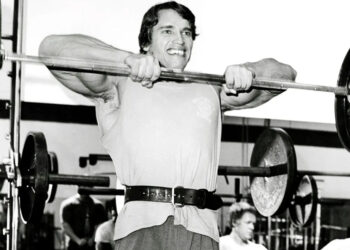Some exercises are dangerous and the Upright Row, shoulder exercise is one that needs to be buried six feet under. Jeff Cavaliere explains why.
The anatomy of the shoulder joint is such that there is a limited amount of space above the ball (in the ball and socket) for the bone itself as well as the other many important structures such as the rotator cuff tendons, bursa, and biceps tendon. When the shoulder joint is internally rotated (as you do with the upright row), you are rotating the greater tuberosity on the humerus directly into the joint, leaving less room for all of these structures.
If on the other hand you externally rotated your upper arm at the shoulder joint, you would do the exact opposite. External rotation at the shoulder joint creates extra room for the ball to move within the socket and still leave room for the other structures mentioned before.
Check out the video:
When performing the upright row exercise, however, you are forcing your shoulder joint not only into the internal rotation, but you are combining it with elevation. This only does not anatomically sit well or rank as a safe motion (especially when you consider the repetitive nature in which you do it from set to set, workout to workout. Changing the hand position to be wider and using an ez curl bar, while slight improvements, do not come close to fixing the problem. The only way to overcome the inadequacy of the upright row is to stop using barbells and instead use dumbbells and perform something called the high pull.
Level Up Your Fitness: Join our 💪 strong community in Fitness Volt Newsletter. Get daily inspiration, expert-backed workouts, nutrition tips, the latest in strength sports, and the support you need to reach your goals. Subscribe for free!
The high pull allows you to get your hands up and back behind your body when you lift them. This is due to the external rotation that can be obtained at the shoulder joint rather than the negatively impacting internal rotation. Because the dumbbells are not fixed in place or connected via a bar that cannot pass through your body, you can maneuver them this way to get the relief the shoulder joint is looking for to make this exercise safe.
Mobility doesn’t solve the issue either. Increasing shoulder mobility at the expense of stability in a different part of the shoulder is not solving the problem. The bottom line is, this exercise is a bad exercise that deserves to stay buried in the iron graveyard. There are many other options for developing the delts and certainly the traps.








